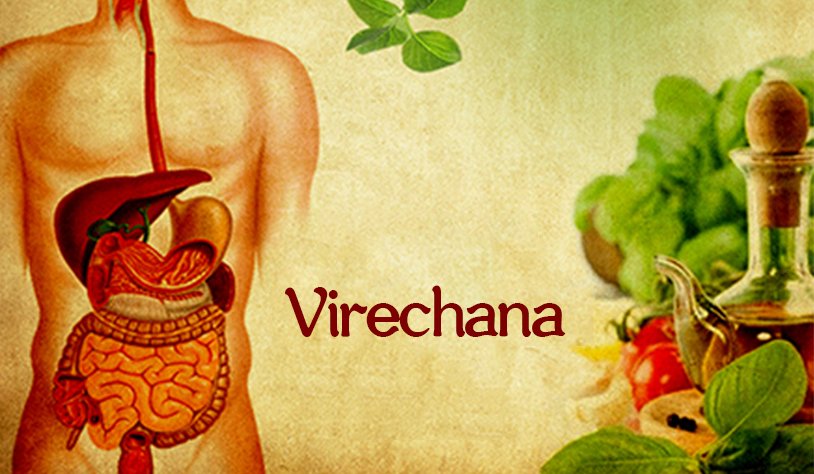Most Common Ayurvedic Treatments in India
Diet
Probably the first and most common ayurvedic treatment many people opt for their diet. Ayurvedic diets, to be specific, are designed as per the individual’s doshas, how they are imbalanced and what the end goals of the person are. Generally, experts recommend including seasonal whole fruits and vegetables to get the most benefit nutritionally. Herbs and spices are also recommended but in combination with certain foods only. There are also foods to avoid which would not bring in the most advantages. Along with a thorough diet plan, Ayurvedic doctors also recommend when and what to exercise along with meditation.
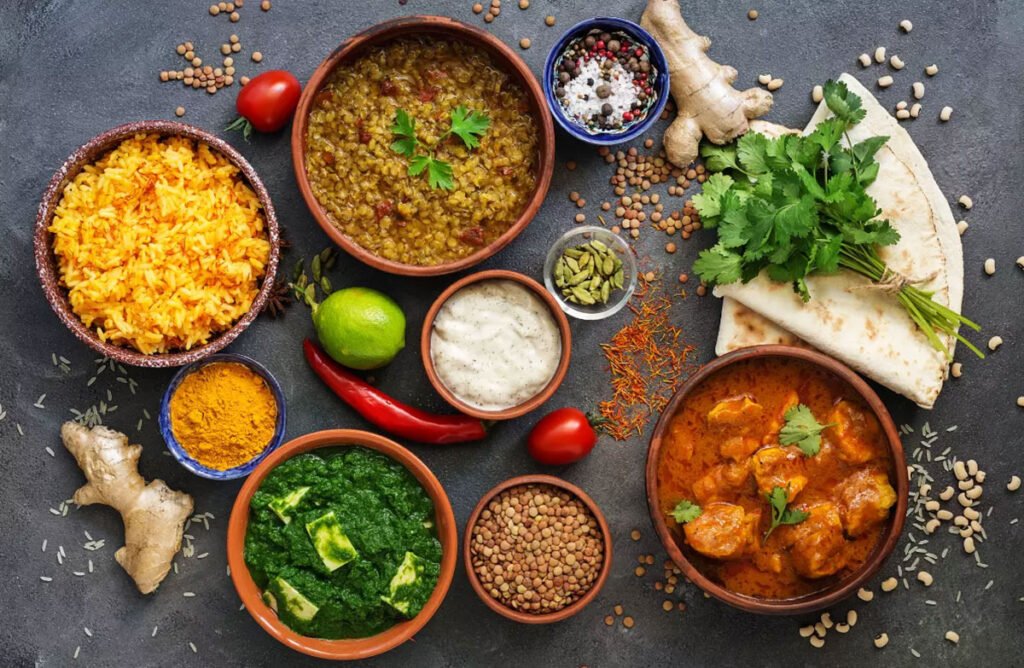
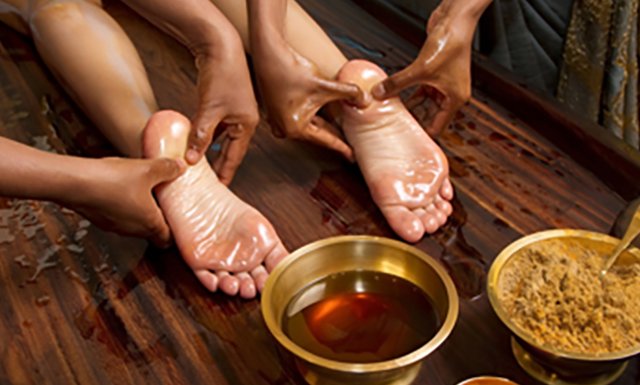
Abhyanga or Ayurvedic Massages
Abhyanga refers to Ayurvedic massages. These massages are meant to soothe the body and the mind while also helping the skin. This is a full body ayurvedic treatment where the entire body is massaged from head to toe. The process of the massage with the right pressure is intentional with an aim to help with blood flow in the body. The whole massage lasts for around 5 to 15 minutes after which the individual rests and then takes a warm bath. Customarily, the massage takes place in a well-ventilated warm place. Another part of the abhyanga is the oils used in the massage. Different oils are used for different body parts.
Panchkarma
Among all common ayurvedic treatments, most people are aware of Panchkarma. Panch meaning five refers to five different actions done as a part of the treatment. Panchakarma wishes to remove all waste from the body and cleanse and destress the body at the same time. There is a pre-purification stage where the body is massaged in preparation for the treatment. Thereafter, the patient goes through Vamana or induced vomiting, Virechan or purgation, Basti or Enema, Nasya or nasal treatment and Rakta Moskha or purification of blood. Each of these treatments is also done individually and has been elaborated further on.
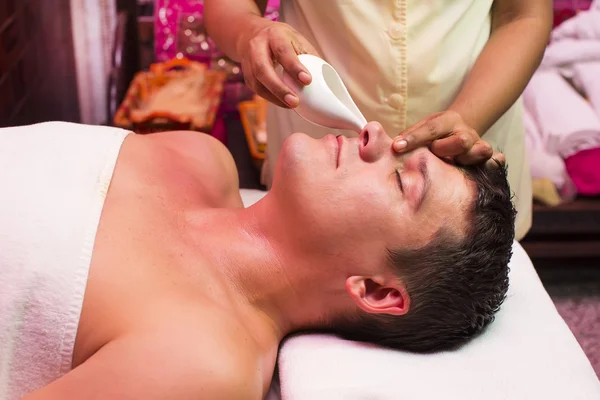
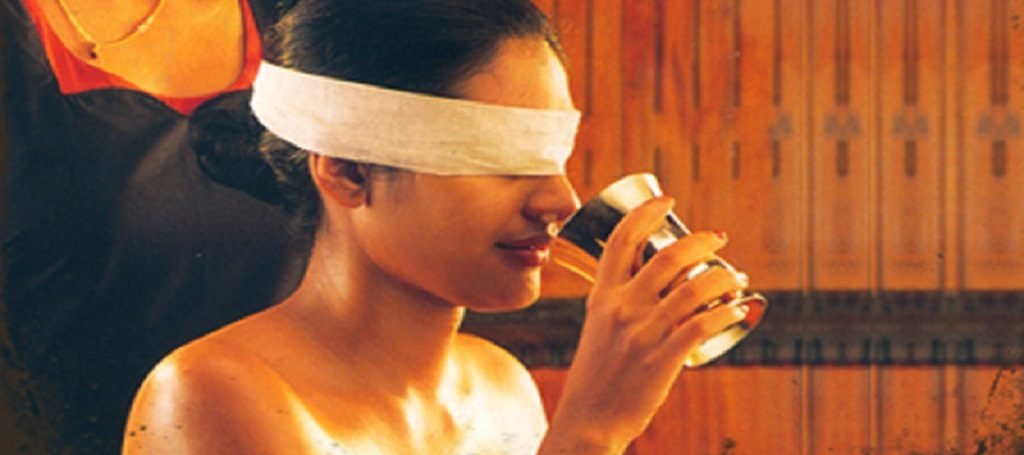
Vamanan
Vamanan or medically induced vomiting might seem scary at first but has a host of benefits. The focus is to remove excess Kapha dosha from the upper respiratory part of the body. Patients with sinus issues, asthma and even certain skin disorders are recommended for this treatment. After the pre-treatment, the patient is sitting in a comfortable position and is given a concoction of medicinal herbs. This mix starts the process of vomiting and cleanses the body. Vomiting stops once the entire medicine is out of the body.
Snehavasthy
Snehavasthy or an enema helps in the elimination of waste from our intestines. Over time out because of wear and tear our intestines take time to remove this waste. When there is accumulation, in the ayurvedic treatments list, Snehavasthy is recommended. Medicated fatty oil like ghee is used on a patient who has just eaten a meal. The oil is injected into the rectum with constant pressure. The oil will lubricate and also combine with the waste material for a smooth flushing out. Vata dosha is balanced with this treatment and patients also witness better digestion.


Nasyam
Nasyam refers to the process of administering treatments to the nose. Usually, the treatment is an oil and the treatment is recommended for people who have stuffy or congested noses. Other side effects like migraines and headaches are also removed in the process. Patients are left with clean sinuses and less mucus in their bodies. Oil is taken on a finger and spread out on the insides of the nostrils. With the head tilted, the patient takes some time, usually 5 to 10 minutes, to inhale the oil and spread it out in the nasal membrane. Nasyam is typically done in the colder months.
Panchkarma
Among all common ayurvedic treatments, most people are aware of Panchkarma. Panch meaning five refers to five different actions done as a part of the treatment. Panchakarma wishes to remove all waste from the body and cleanse and destress the body at the same time. There is a pre-purification stage where the body is massaged in preparation for the treatment. Thereafter, the patient goes through Vamana or induced vomiting, Virechan or purgation, Basti or Enema, Nasya or nasal treatment and Rakta Moskha or purification of blood. Each of these treatments is also done individually and has been elaborated further on.

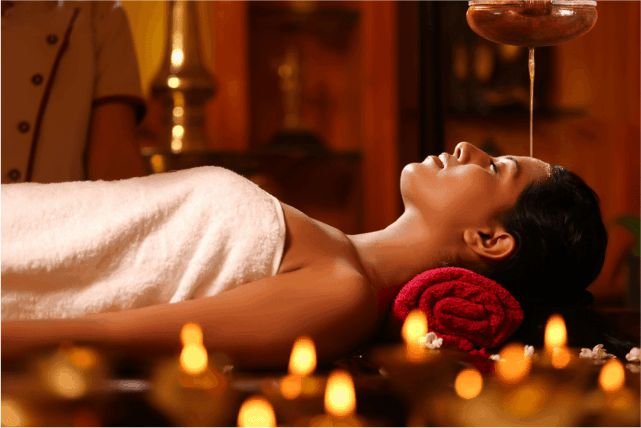
Shirodhara
When people look up advertisements for Ayurvedic treatments, most show oil being slowly dripped on the forehead of a person lying down, that treatment is known as Shirodhara. The treatment creates an aura of relaxation and awareness after which the individual is mentally and physically balanced. The oil stream is focused on the third eye of the forehead. Besides the mental aspect, Shirodhara also helps with dry hair and skin, hair fall and body aches. When pitta dosha is high and there is an excess of anger or irritability, Shirodhara treatment is recommended.
Tharpanam
Ayurvedic beauty treatments are quite famous for being natural and soothing. Tharpanam is one such treatment for the eyes. Everyone today is glued to a digital screen, be it for work or otherwise. This causes immense strain on our eyes. To relax them, the Tharpanam is done. To start out, a mixture of dough is made around the eyes as a well to put in the medicine later. As the oil or treatment is poured in, the patient is asked to close and open their eyes multiple times. Ghee, which is generally used for this treatment, provides stimulation to the optic nerves.

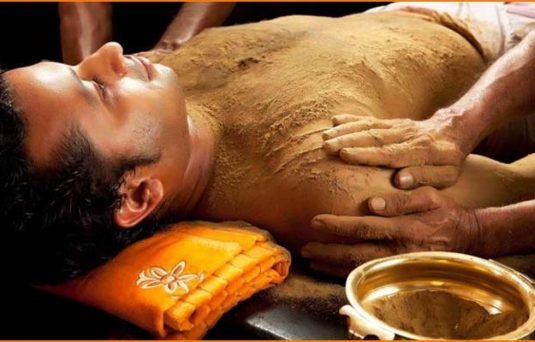
Putapakam
After the Tharpanam treatment is completed, the Putapakam treatment is done. It is done to remove any residue of ghee from the skin. This treatment is done using herbal juices and rejuvenates the patient while removing the heaviness induced by the use of ghee. While ghee needs to be absorbed for the above treatment, too much of it is harmful. This is where putapakam comes in.
Virechanam
To wrap up our list of the most common ayurveda treatments we have Virechanam or induced purgation. Our bodies go through a lot during the day. With so many different processes going on, there is bound to be buildup and blockages. This means nutrients cannot be absorbed properly. Virechanam is a deep clean treatment for the digestive system that is tailor-made for each patient. Early in the morning, the treatment is given to the patient after which the expulsion process starts.
